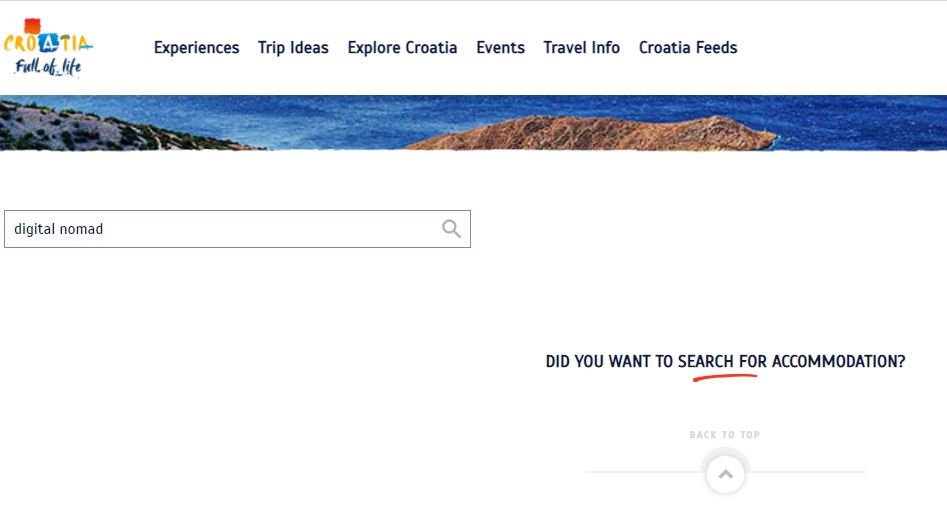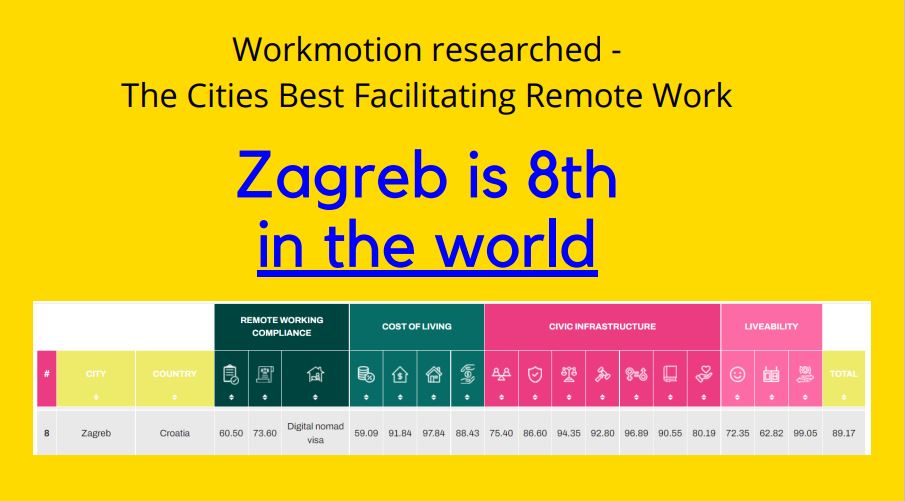Price of Croatian Tobacco Products to Rise as of Monday
February the 26th, 2021 - Croatian tobacco is set to see a price hike once again on the 1st of March, 2021 following a recent government session during which the matter of Croatian tobacco products and their excise duties was discussed.
As Poslovni Dnevnik writes, at a recent government session, a decree was readily adopted which will increase excise duties placed on Croatian tobacco and related tobacco products from March the 1st this year, which will naturally lead to an increase in prices for the end user''The specific excise duty in the amount of 400 kuna per thousand cigarettes is increasing (when compared to the previous 370 kuna). The minimum excise duty will be increased to 888 kuna compared to the current 824 kuna.
The amount of excise duty for fine-cut tobacco is set to increase to 860 kuna per kilogram compared to 800 kuna, which is what it is now. Excise duties on heated tobacco products is what is set to increase the most - from the existing 800 kuna to as much as 1,400 kuna.
Excise duties placed on e-liquids aren't going to change price-wise,'' explained Finance Minister Zdravko Maric when discussing the upcoming Croatian tobacco product price increases. He also stated that the decision on the final price for consumers lies with the producers themselves, but also that according to the calculations of the Ministry of Finance, a pack of cigarettes should not increase by more than two kuna for the end consumer.
For the latest travel info, bookmark our main travel info article, which is updated daily.
Read the Croatian Travel Update in your language - now available in 24 languages.
Enticing Museum of Senses: Born in Croatia to Global Franchising & Partnership
February 26, 2021 - The innovative Croatian museum revolution continues. Meet Museum of Senses, born in Croatia, but expanding globally through franchise and partnership.
As a child, I visited a lot of museums. They were places of awe, wonder and inspiration. Places where I learned things, but also places where I always had a feeling that they were really for adults.
Museums in the era when I grew up were places that you could look, admire and wonder.

But not touch.
Look but not really experience.
How the world of museums has changed.

As a father going to modern museums, I am struck by the bigger focus on interaction and experience. And that focus on interaction and experience involves evoking human senses. And there is one museum concept which takes this to a higher level.
Its name, appropriately enough, is the Museum of Senses.
Born in Croatia with three founding partners (the third is from Slovenia), the Museum of Senses blends the concepts of museum visiting and edutainment into a sensual experience quite unlike any other. With six distinct sections dedicated to the six senses of sight, sound, smell, touch, taste, and balance, the Museum of Senses provides an engaging hands-on museum experience that this former child could only dream of.

Each of the senses is associated with one of the leading colours. Colours through the zones appear in the form of light, illustration, elements of visual communication and by exhibits themselves.
By exploring their senses, visitors not only enjoy themselves, but also learn something new about their basic senses, while being tested by the power of the mind when confronted by an array of sensual concepts.
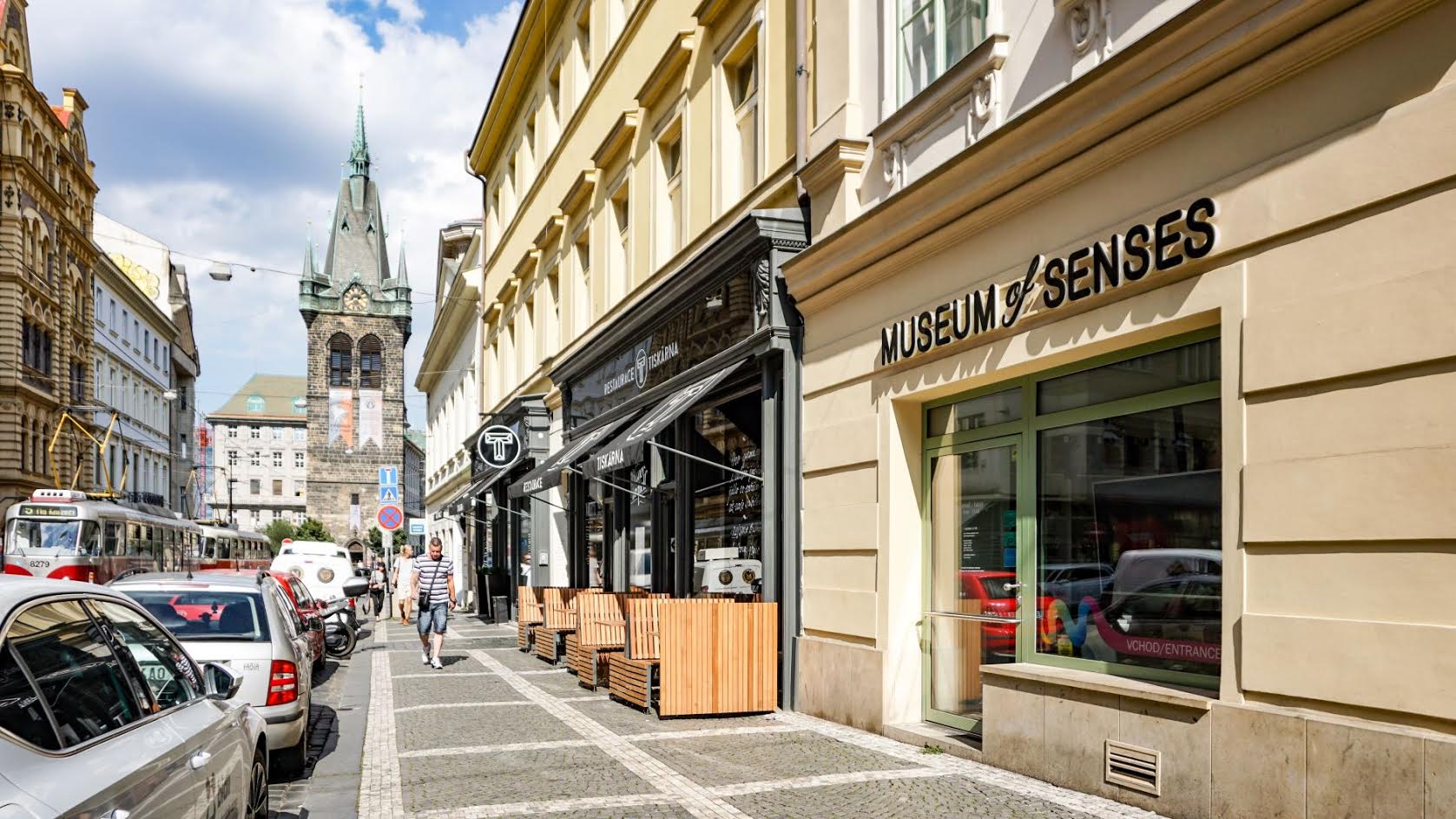
The first Museum of Senses opened in Prague in 2017, followed by Bucharest in 2018. They were immediately both popular and profitable, as well as attracting industry recognition for quality. In 2020, for example, the Prague and Bucharest museums received the TripAdvisor Best of the Best Award, which is awarded to the best in the category based on an algorithm which includes ratings and reviews.
The challenge soon emerged as to how to most effectively expand the museum concept to other parts of Europe and beyond. The answer was a relatively new concept to the museum industry, but one which is growing in popularity – franchising.
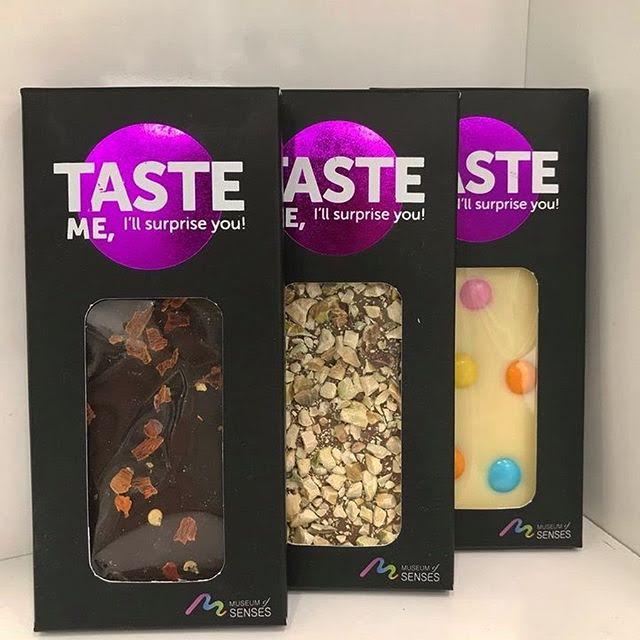
The Guggenheim Museum, which opened in 1997, was the first to experiment with the concept of museum franchising in locations such as London and Dubai, but in recent years, the concept has expanded across the museum sector, with Croatia already providing two successful models from illusions to broken relationships.
As with most things on the planet, the pandemic put those expansion plans on hold, but it also created a huge opportunity. With 2021 hosting a (hopefully) post-pandemic world, the world has changed, and the franchising conditions for the resolution of the Museum of Senses plan are looking more favourable than ever.
There are several reasons for this. Reduced rents in a remote working world, as well as a willing workforce in a global economic downturn, will have a positive effect on the bottom line. But research has also shown that one of the first sectors which will return to the 'old normal' is the edutainment and entertainment sector. People want to break free of the confinement of the last twelve months and have fun.
And fun is what the Museum of Senses offers in abundance. With a primary target group of millennials, followed by a secondary target of young families and teenagers, the Museum of Senses concept is appealing to a diverse audience, both local and tourist. Exhibits are introduced in a fun but educational way, with a sensual experience to define them.
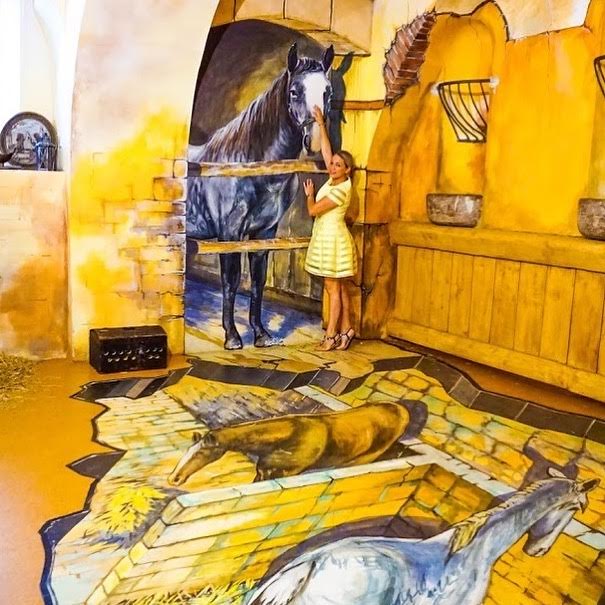
A key unique selling point of the Museum of Senses is the way it embraces local culture and traditions into its exhibits, thereby making each location unique. For example, one museum location is located in a former stables 150 years ago, and so there is a balance feature with artwork to reflect the historical reality.
Museum of Senses is based on five key concepts: interactive engagement in the exploring of the six senses; design and concept reduced to a basic level to reach the widest possible audience; visual design, enticing enough for social media promotion and sharing; that focus on local culture to develop a unique experience; and a flexible approach to branding and commercial partners, who can be brought into be a part of an exhibition (examples being Skittles, Coca Cola and Huawei), rather than remaining a mere sponsor.
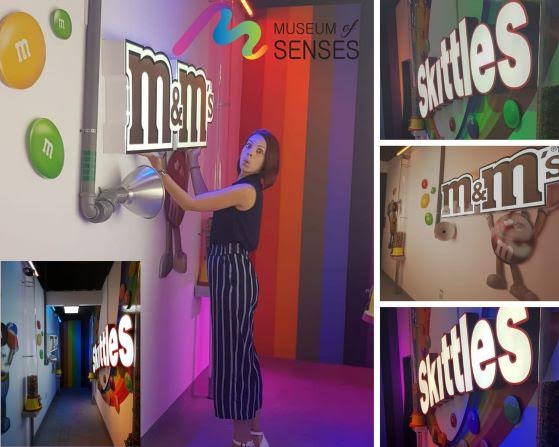
New franchises and partnerships are also undergoing due diligence in several cities worldwide.
According to Dejan Grbic, managing partner of Museum of Senses, speaking at the TGFM webinar “Emerging Franchise Brands for the New Year” last month (see the video below – Grbic's presentation starts at 17:30), the Museum of Senses franchise is an excellent opportunity, and the timing could not be better.
(Museum of Senses franchising presentation starts at 17:30)
The flexible franchise model involves light management after the initial focus of expert assistance in location sourcing, design and set up. Standard museums need an area of 500m2, but the concept is flexible enough to work in areas as small as 300m2 and up to 1000m2. The pandemic spawned an additional concept which works well in shopping malls, for example – the pop-up temporary museum.
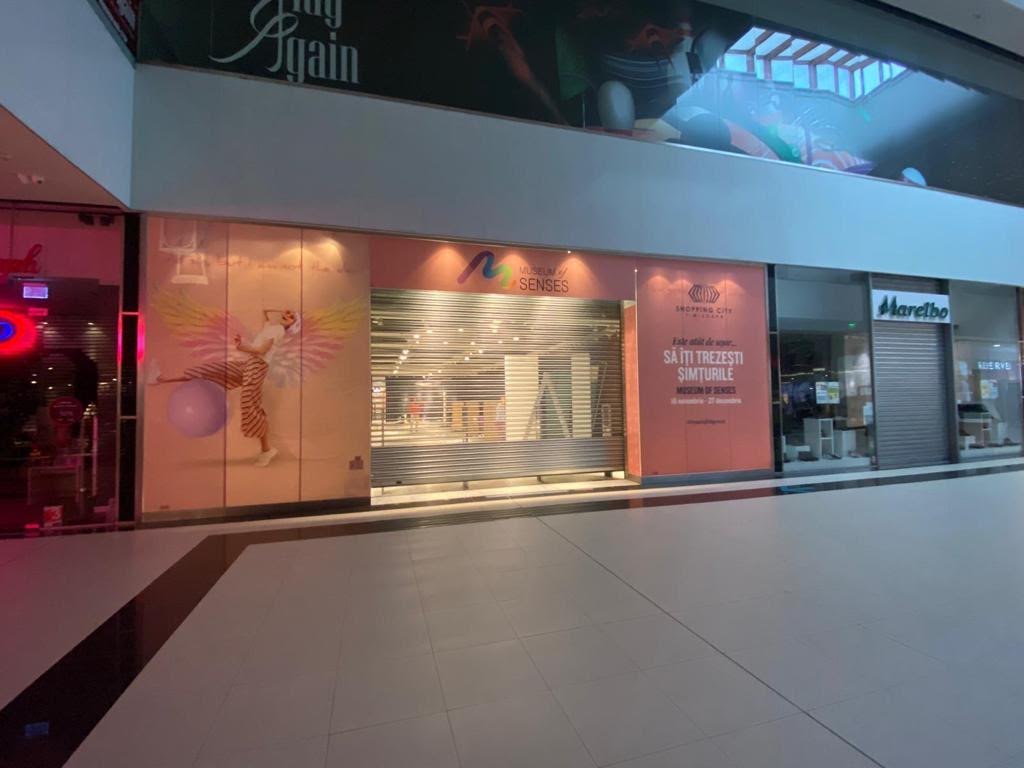
Revenues for a standard location are in the region for US$1 million a year ($1.5 million for a more prime location), based on a ticket price of US$10, with return on investment around 6-12 months.
Grbic says that the concept works for a number of reasons. Its unique local approach to its exhibits sets it apart; there is a set of diversified sales channels, which appeal to both local and tourist; the wider net of tourism and the hospitality sector, schools, even birthday parties; lots of free media and PR in the form of social media, TripAdvisor and similar platforms; and that flexible, light management mentioned above.
The concept of edutainment in the museum industry is still fairly new, and the fresh approach of Museum of Senses to the museum market is certainly fresh and on the path to success.
I look back to the museum child that I was, and I wish them every success and with a little envy. Back when I was a child, the only sense that I could use at a museum was sight. How inspiring it must be to visit a museum and test the limited of sight, sound, touch, hearing, taste and balance.
For more information about Museum of Senses, either as a visitor or a potential franchisee or partnership, visit the official website here.
Sisak-Moslavina Earthquake: Unsafe Stickers "Decorate" More Than 10,000 Buildings
February the 26th, 2021 - Following the devastating Sisak-Moslavina earthquake which caused ruination and even the loss of life in central Croatia at the very end of what was truly a terrible 2020, yellow and red ''unsafe'' stickers now decorate more than 10,000 ruined buildings within the area.
As Vecernji list/Danijel Prerad writes, according to this morning's updated ArcGIS data, serious damage caused by the Sisak-Moslavina earthquake back in December last year was reported on 37,679 buildings, of which 29,262 were inspected by staticians. Due to that damage, 3,456 buildings were given a red sticker, and due to external influences, another 346 objects can now be removed.
2,913 facilities remain temporarily unusable until a more thorough inspection can take place, and urgent interventions are needed for an additional 3,493 buildings that also cannot be used for now.
Only 644 of the inspected buildings remain without damage, and the more than 18,400 buildings have received a green ''safe for use'' sticker, a statement from Sisak-Moslavina County read.
As of today, the office of the Ministry of Physical Planning, Construction and State Property has been opened in earthquake-stricken Sisak at the following address: Ivana Kukuljevica Sakcinskog 1 (the Fina building).
At the aforementioned location, Sisak residents can now submit their requests for property reconstruction and renovation. On Friday and Saturday this week, mobile offices will be present in the settlements of Majur and Grabostani. On those days, mobile office employees will receive requests for the restoration of the damaged facilities in Majur for the area of Majur, Stublje and Gornji Hrastovac, and in Grabostani for the area of Grabostani, Veliki and Mali Krcevo, Svinica, Mala Srednje and Gornje Meminske and Mracaja.
Officers will receive requests and help locals fill out any of the forms and resolve other issues of an administrative nature. Citizens will only be able to initiate the renewal procedure with a system that is directly connected to the cadastre, land register and other official databases by presenting an identity card and filling out a simple form. Requests for the reconstruction of buildings in the area following the Sisak-Moslavina earthquake must be filled in before anything can occur and the most basic information of the applicant will be required.
For the latest travel info, bookmark our main travel info article, which is updated daily.
Read the Croatian Travel Update in your language - now available in 24 languages.
Bosnia and Croatia Sign Military Cooperation Plan for 2021
ZAGREB, 26 February, 2021 - Bosnia and Herzegovina and Croatia on Thursday signed a military cooperation plan for 2021, the Bosnian Defence Ministry said.
The document was signed by Bosnian Assistance Defence Minister Zoran Šajinović and Croatia's Military Attaché to Bosnia and Herzegovina, Brigadier Davor Kiralj.
The plan provides for 27 joint activities in Croatia and 14 in Bosnia and Herzegovina. The activities include military education and training, exercises and high-level meetings.
Šajinović and Kiralj expressed their satisfaction with the cooperation between the armed forces and defence ministries of the two countries with a view to further promoting good neighbourly relations between Bosnia and Herzegovina and Croatia.
They expressed confidence that the cooperation would continue to be expanded in a spirit of Euroatlantic integration for the benefit of both countries.
Smartwings Flights from Prague to Split, Dubrovnik Coming this Summer!
February 26, 2021 - Smartwings flights from Prague to Split and Dubrovnik will operate this summer!
Croatian Aviation reports that the Czech low-cost airline Smartwings has announced two routes to Croatia in the upcoming summer flight schedule.
Namely, Smartwings plans to connect Prague with Split and Dubrovnik this summer. In 2020, the company operated between Prague and Split, while the line to Dubrovnik was suspended for obvious reasons.
In the 2021 summer flight schedule, the company plans to resume traffic to both mentioned destinations later than in 2019.
The Prague-Split-Prague line will operate from May 1, once a week, every Saturday. From June 1 to October 10, daily flights on this line have been announced.
Smartwings will operate B737-800, B737-900ER aircraft to Split, and B737-MAX-8 aircraft have also been announced, or aircraft that received a permit for re-operation less than a month ago. Just yesterday, February 25, the company made its first commercial flight with this type of aircraft after the “MAX” aircraft's airworthiness approval was issued.
The Prague-Dubrovnik-Prague line will operate from the beginning of June to the beginning of October (June 1 to October 3). Smartwings currently plans to operate daily on this route, mainly with B737-800 aircraft.
In 2019, Croatia Airlines regularly operated for the last time in the summer flight schedule between Zagreb and Prague. This line did not work in 2020 and is currently not on sale for this summer season either.
It will still be possible to fly directly from Prague to Zadar. Ryanair introduced the Zadar-Prague line last summer, and this season it plans to operate twice a week, every Tuesday and Saturday, from May 1 to October 30. This well-known low-cost carrier alone will offer over 20,000 seats on the direct line between Zadar and Prague. At the same time, Smartwings will have a significantly higher capacity at its disposal to Split and Dubrovnik.
For the latest travel info, bookmark our main travel info article, which is updated daily.
Read the Croatian Travel Update in your language - now available in 24 languages.
World-Famous Photographer Jadran Lazic Announces Monumental Two-Part Monograph
February 26, 2021 - World-famous photographer Jadran Lazic has announced the release of a monumental two-part monograph in both Croatian and English.
It has been more than 45 years since the young Split photographer Jadran Lazic told his friends at the cult Split cafe Semafor that he was going to Paris.
“They’re only waiting for you,” his friends told him, and almost five decades later, Paris really was waiting for him. Like the rest of the world, Index.hr writes.
"I was thinking of three options. New York, London, or Paris. New York was too far away, and I realized I couldn't hitchhike if I failed. London was, to my knowledge, too rainy and foggy, so I opted for Paris," Lazic says at the beginning of the conversation.
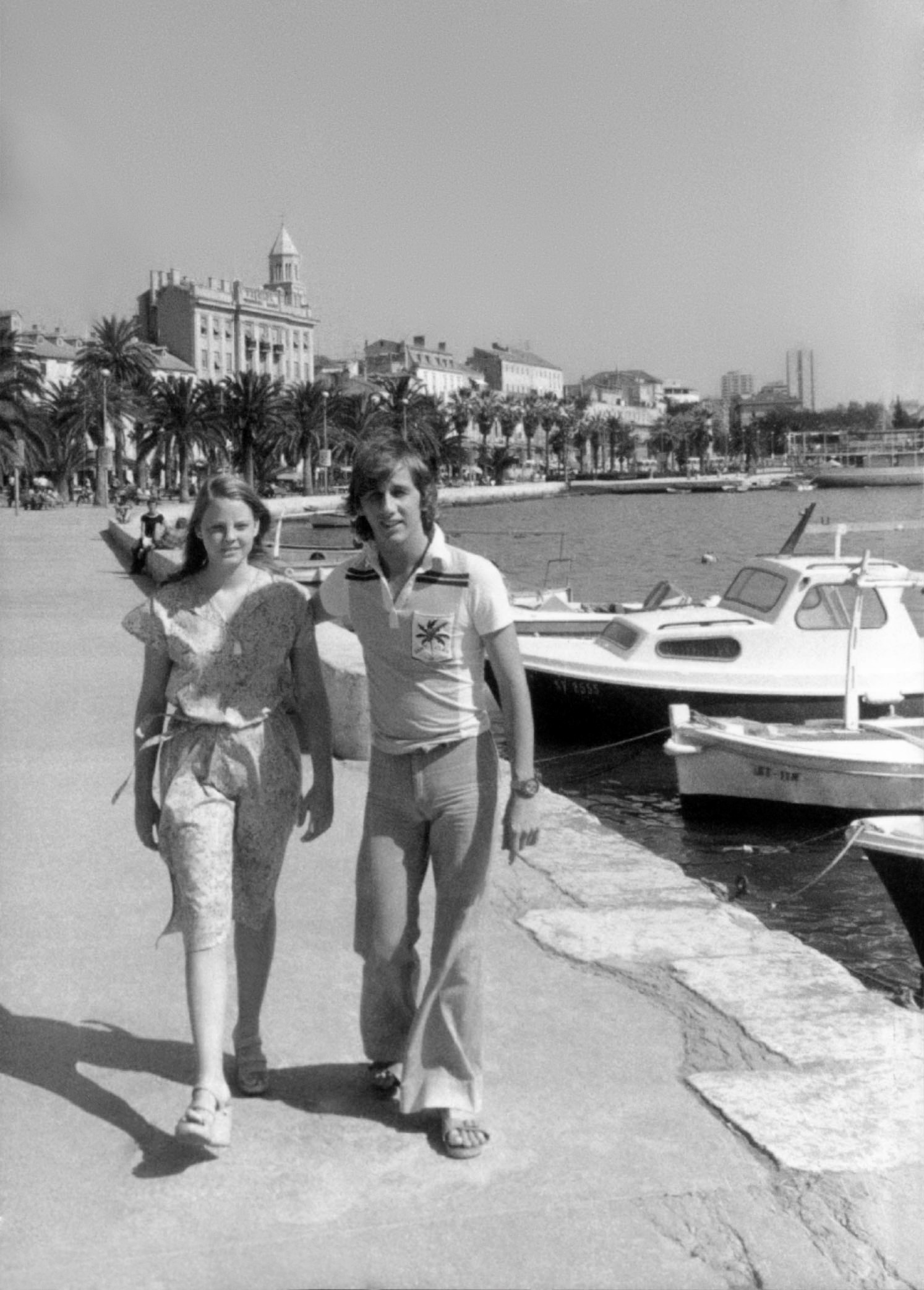
Lazic with Jodi Foster in Split, 1978
In recent months, a monumental luxury reissue of his two books, Ja Paparazzo and Reporter, has been in preparation, covering the period up to 1984. The new books will also include the period from 1984 to 2020, which fans of his photography will buy in a unique whole. Before the Internet, Lazic's books had large circulations, and thousands of people wanted to see movie stars and moments captured by the famous photographer.
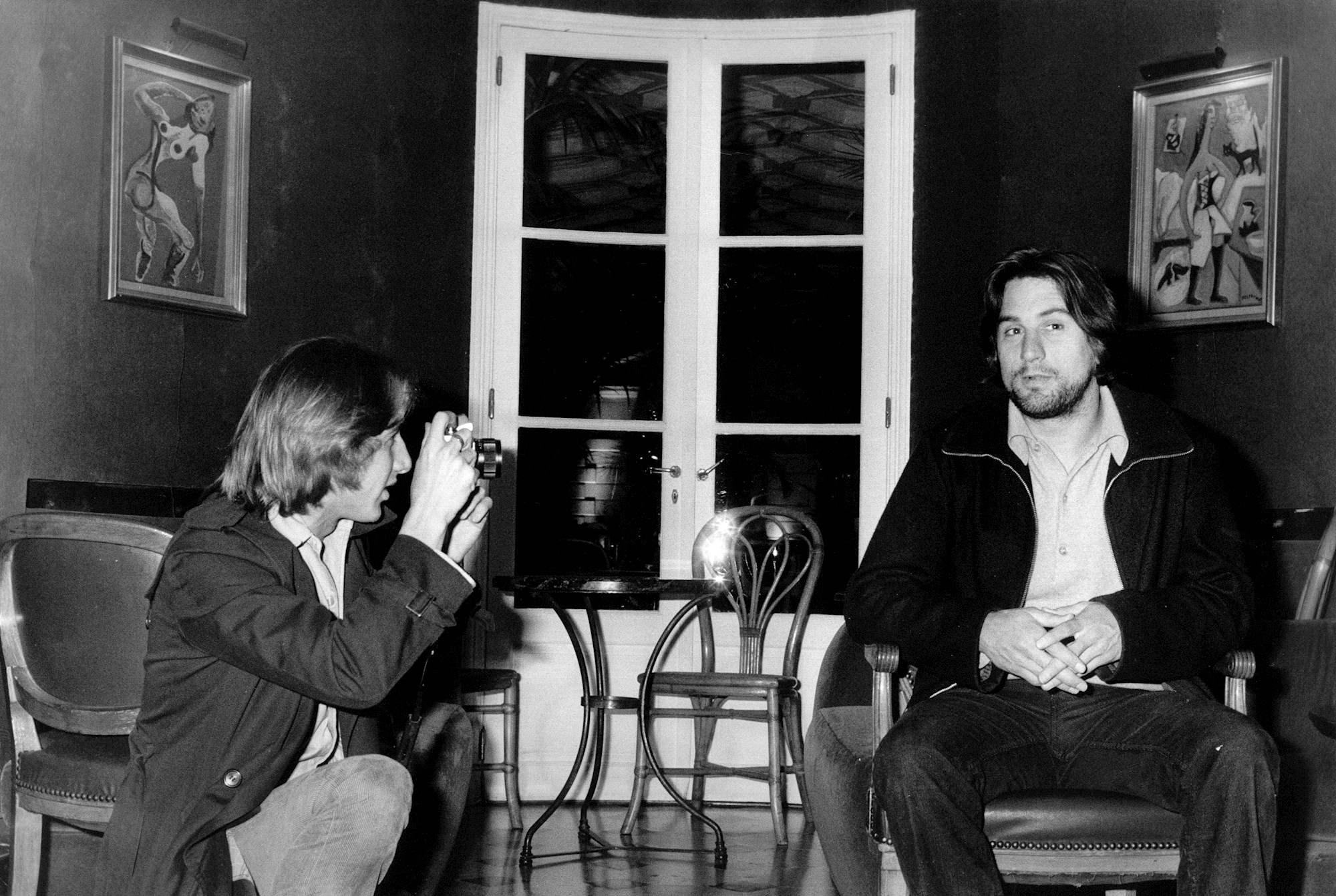
Lazic with Robert de Niro in Paris, 1975
Ja Paparazzo, published in 1980, sold 10,000 copies, and Reporter, a book published two years later, had a circulation of 5,000. Reporter was published in an updated edition in 1985 when it sold 10,000 copies.
The two-part monograph (Part 1 500 and Part 2 400 pages) will be published in Croatian and English.

After the monograph sees the light of day, a photo tour of the former Yugoslavia cities is in the works.
There are many great photos to be found inside - from Split's most famous people to the biggest Hollywood divas and movie stars.
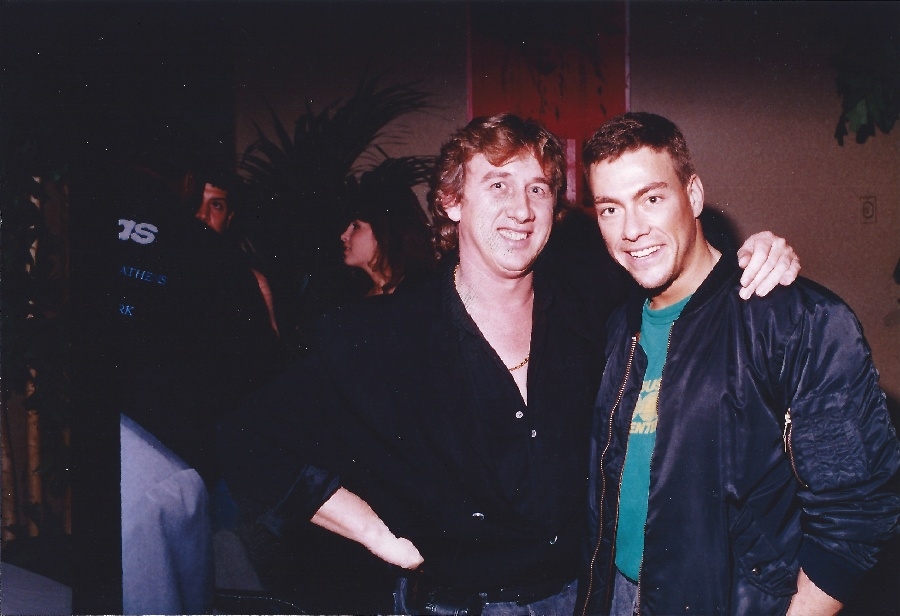
Lazic and Jean Claude Van Damme, 1988.
The last photos in the monograph, which features Lola Astanova, were taken during the coronavirus pandemic. Lazic says they were taken, among other things, because his wife quarantined him in Los Angeles every time he returned from a trip.

Photo by Jadran Lazic
"I was connected to Lola Astanova by Feliks Lukas, director of the WTA tennis tournament Croatia Bol Ladies Open. During this Covid time, we still organized a shoot in Miami at the end of October last year. My younger daughter Kiki and I surprised my older daughter Tamara for her 40th birthday in New York. So that my wife wouldn't quarantine me again, I continued from New York to shoot Lola in Miami," says Lazic.

Photo by Jadran Lazic
Lazic says he was persuaded to do this monograph project by his friend Silvija Hraste. On his recommendation, he hired the Croatian Authors' Agency as the book publisher and gave it a general mandate to take care of its copyrights and further promote the author's work. The most important part of the future promotion will be the publication of a monograph that will truly be a treat for collectors and photography lovers. In addition to the photographs that accompany his work in Split, Paris, and Los Angeles, the author has prepared accompanying texts and anecdotes that describe the situations in which the photographs were taken. Some of them are truly cinematic.
One of them was definitely photographing Leonid Brezhnev's funeral when Lazic photographed for the French agency SIPA Press. Thanks to the Iron Curtain, it was almost impossible to get from Western Europe to the Soviet Union, but Lazic succeeded.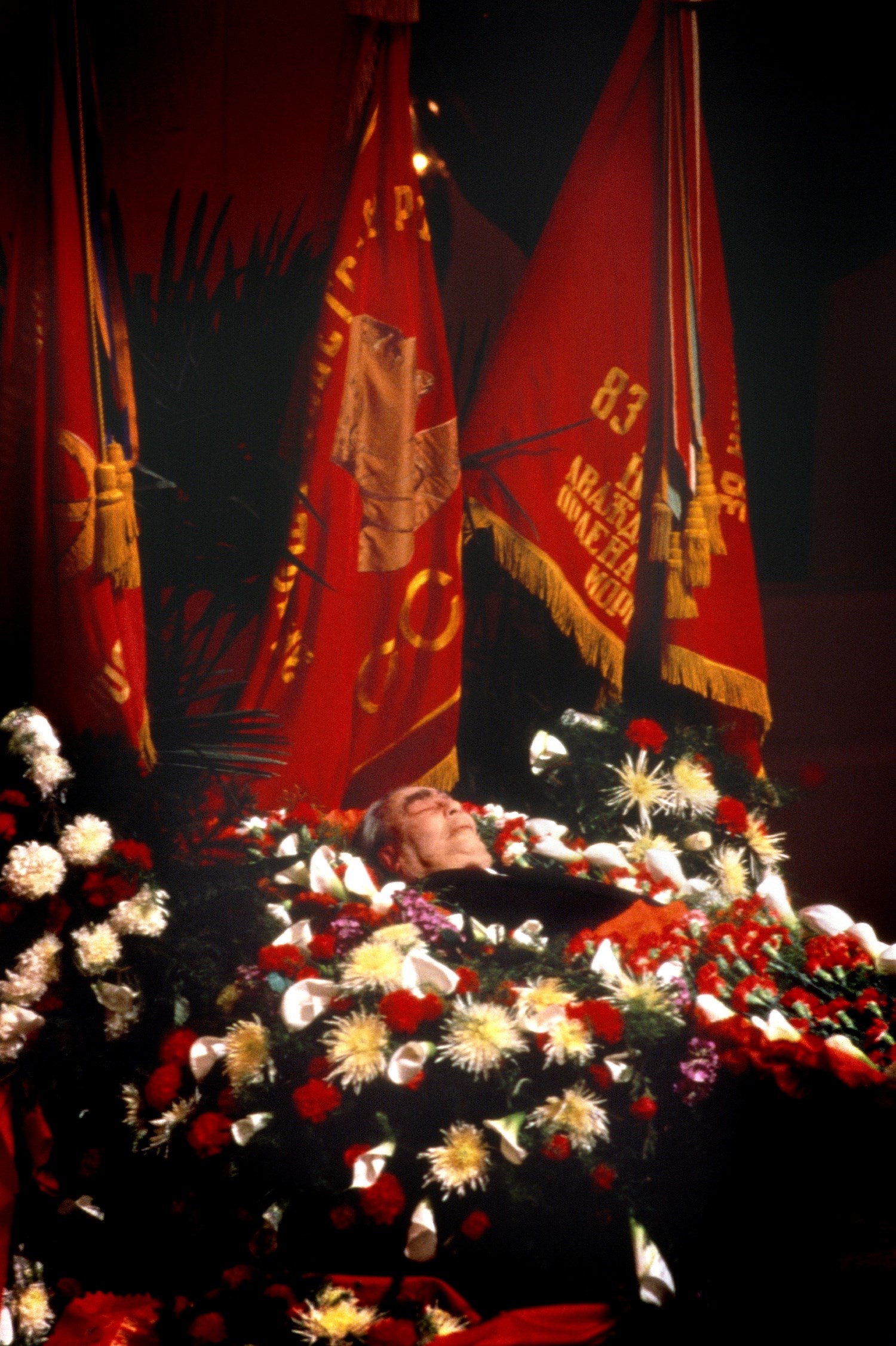
Photo by Jadran Lazic
In Belgrade, he received the accreditation of a Serbian media outlet and went to Moscow as a Yugoslav photographer.
He managed to photograph the funeral and the body of the deceased Brezhnev, returned to Belgrade, and then to Paris, where his boss offered him his Mercedes.
Lazic refused the Mercedes and asked to split the money in half. Then he earned enough money for a villa on Hvar, where he stays today when he visits his homeland.
Can a similar success happen to photographers today? Index asked.
"No. It can't happen again. Today, everyone would record the funeral with their mobile phones," says Lazic.
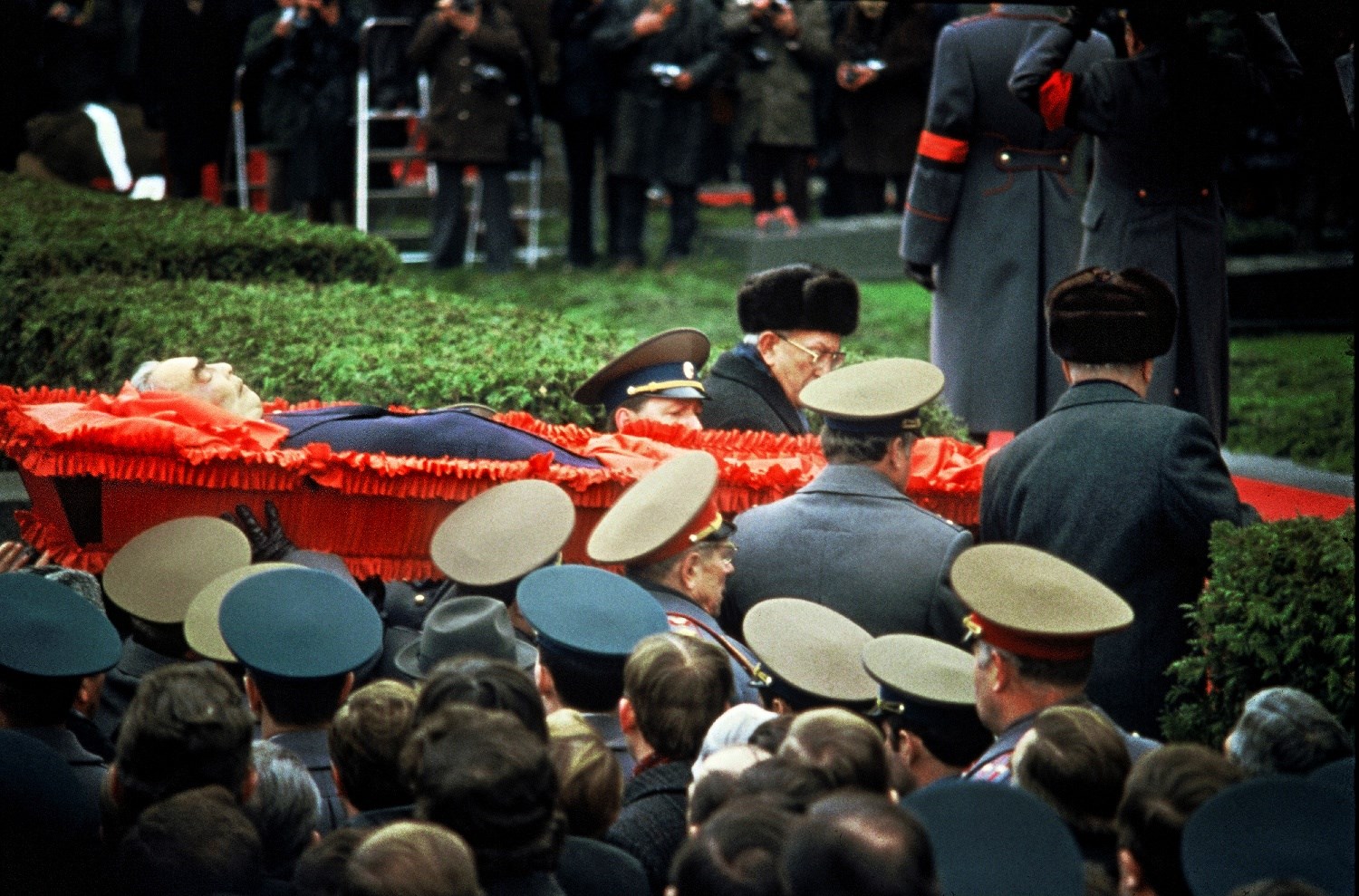
Photo by Jadran Lazic
Among the numerous film and television stars who posed for Lazic and whom he managed to capture with a lens, the photographs of Princess Diana are very rare.
“I photographed her a few times at the Cannes Film Festival,” he tells Index, but he was never in a group of paparazzi who hunted down the princess around the world. Princess Diana was a catch for the paparazzi for years and eventually died while fleeing from them.
"She had her favorite photographers even though it doesn't seem like it today. That's why I didn't have the ambition to chase her," says Lazic.

Index asked Lazic if Hollywood actresses are as insecure as ordinary mortals when posing for a photo?
"No. They are most confident and safe in front of the camera, and they see the photos immediately after the photoshoot. At that time, photoshop began to develop, so the photos were fixed a bit. Of course, not in the amount that is done for Instagram today," says Lazic, who once photographed the famous Mila Jovovich nude.
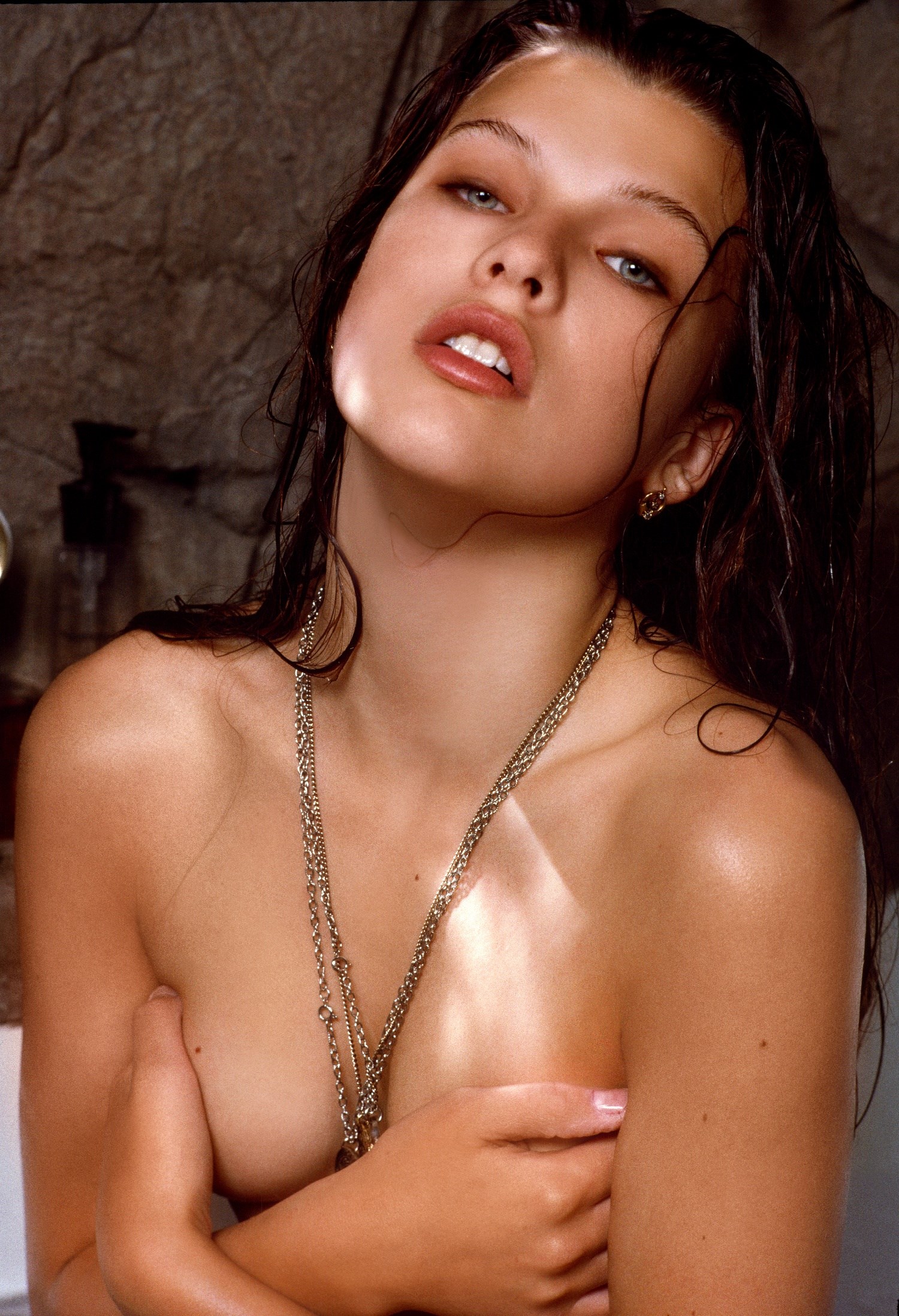
Photo by Jadran Lazic
"Instagram has destroyed photography and the profession. Today there are a billion applications; actresses take photos of themselves and edit pictures. They don't need photos for magazines anymore because they have a much larger audience on Instagram than any magazine," says Lazic.

Photo by Jadran Lazic
Although he has an Instagram account, he hasn’t used it in a long time.
"It's a waste of time. I have no one to prove myself to anymore, especially on Instagram," says Lazic.
Still, he often photographs his friends for the popular social network, and the results regularly delight them.
He also revealed the recipe for the perfect Instagram photo:
- Wipe the lens on the cell phone well
- The light source must always be behind your back or to the left or right of the object. It should never be behind the object
- Inhale for a moment as you take the photo
Towards the end of the conversation, Index couldn’t help but wonder what Jadran's friends from Semafor said when he returned from Paris with a collection of photos of famous actresses, many of whom were naked.
"'Jeba on svoju mater,' they said," Jadran Lazic concluded.
To read more about lifestyle in Croatia, follow TCN's dedicated page.
Dutchman Promotes Croatia Globally: Meanwhile, in the Kingdom of Accidental Tourism...
February 26, 2021 - A Dutch entrepreneur in Split is spearheading an incredible PR campaign for Croatian tourism as a volunteer. Meanwhile, in the Kingdom of Accidental Tourism.
Two different approaches to tourism promotion in Croatia.
In the first, a successful entrepreneur from Holland who has been living in Split since 2006. With no connection to tourism whatsoever, he was intrigued by the concept of a digital nomad visa for Croatia and the benefits it could bring. An open letter on LinkedIn to Prime Minister Plenkovic started a journey which saw Croatian bureaucracy move at lightning speed, with the first digital nomad visa issued just 199 days after Plenkovic announced his intention to make Croatia only the fifth country in the world and the second in Europe after Estonia to offer it. Meet Melissa Paul, Owner of Croatia's First Digital Nomad Visa.
Jan de Jong is now switching his focus to growing tomatoes and creating jobs in northern Croatia with a fantastic CROP Hrvatksa project which TCN featured recently. As far as I know, he is doing all this for free (and incurring expenses) because he is passionate about exploiting the many opportunities he sees in Croatia where others do not.
I have to admit that it is wonderful to watch him on his journey, and if you have a few minutes, then check out some of his presentations on YouTube, such as this one at LEAP Summit about Living the Croatian Dream.
The second approach to tourism promotion comes from the Croatian National Tourism Board, also known in some circles as the Kindgom of Accidental Tourism. With an annual budget of (I think) around 400 million kuna and 70-80 full-time staff, as well as (presumably) some tourism expertise, one might think that the Kings would be killing it promoting Croatia, especially when compared to one foreigner with no tourism expertise volunteering his time.
So how is it going?
As Jan posted recently on LinkedIN (see lead photo), it is going very well indeed. There has been outstanding coverage from CNN, Washington Post Euro News, Lonely Planet, Forbes and many more. The digital nomad topic hot right now, and his efforts combined with several others, have put Croatia at the very centre of that global discussion. Global media networks are now reaching out to Jan - expect some more great coverage of Croatian tourism in the coming weeks thanks to his efforts.
For free.
As a Dutchman trying to focus on growing tomatoes.
I was curious to see how the Kingdom of Accidental Tourism, with that huge budget and manpower, would be responding to the latest free gift to come its way. Only after I saw this message on the Total Croatia Travel INFO Viber community did I decide to check how the Kings were rising to the challenge.
This is what you get it you search for 'digital nomad' on the Croatian National Tourist Board website. Just a few days ago, CNN did a fantastic piece on nomads and the Croatian lifestyle.
I guess at least there are no spelling errors on this page.
As representatives of the Kingdom have correctly stated, I am no tourism expert, but I do wonder how hard all this is, especially if you have 70-80 brains and around 400 million kuna working on it. It doesn't even have to cost very much. TCN interviewed a love American nomad couple on Hvar, which led to HRT contacting us and a fantastic feature last night on HRT Puls. Above is the trailer - I will upload the full feature when it is online.
Cost zero. Done by a volunteer.
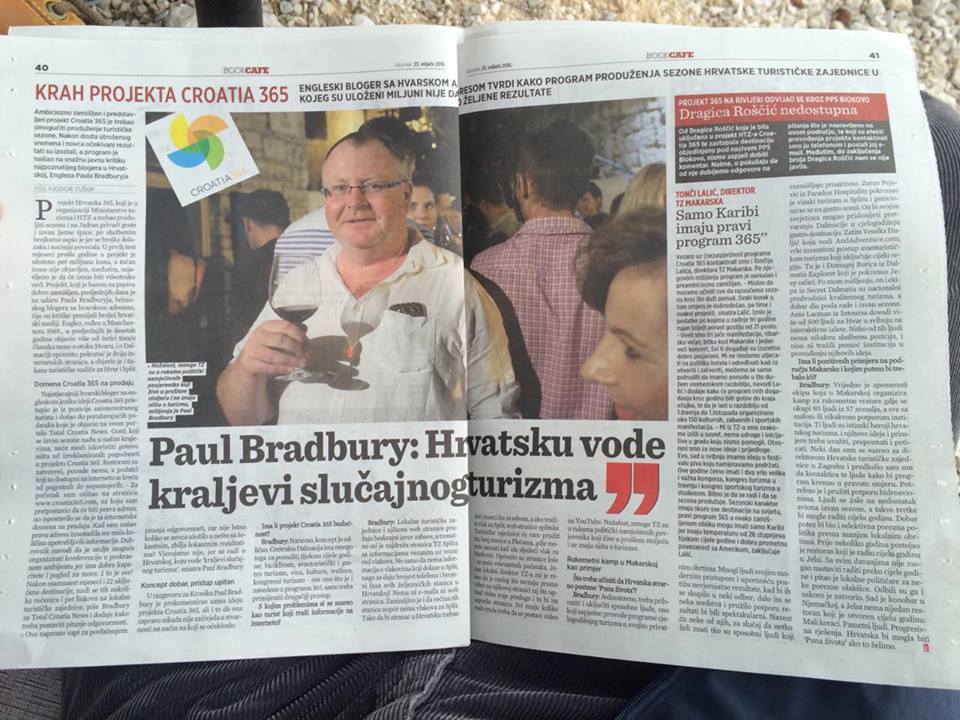
Facebook Memories told me this week that it is five years since the birth of the Kingdom of Accidental Tourism. Things are even more accidental now.
The latest 7-year tourism strategy, which never has anything to do with reality, has now finished. Of the many lofty goals prepared by experts for the 2013 - 2020 period, not one of the 30 projected golf courses was built, for example.
There is no replacement strategy as yet. Has anyone even noticed?
I have a suggestion. Why not give 2% of that 400 million kuna budget to the Dutch tomato grower to see what magic he could do with just a small budget? He has more than shown proof of concept with zero kuna.
For more on the digital nomad story in Croatia, follow the dedicated TCN section.
Index Finds Out New Rules for Cafes, Restaurants, and Sports in Croatia
February 26, 2021 - New rules for cafes, restaurants, and sports in Croatia will take effect from March 1. Index.hr finds out the details.
Index.hr reports that on Monday, March 1, the measures will definitely be relaxed, and the much-anticipated opening of cafe and restaurant terraces will take place.
This is clear after Thursday's government session at which Prime Minister Andrej Plenković announced the opening of terraces and concessions in sports.
"By all indications, the situation is better, but it still requires great caution. To remain responsible in protecting citizens from the coronavirus epidemic, after a series of consultations with several departments, the intention is that from March 1, the work of catering facilities, in addition to what has been relaxed so far, will be opened on terraces and open spaces," said Plenković and announced that training would be held indoors, with some exceptions when it comes to contact and collective sports.
Strict epidemiological rules will be prescribed for both terraces and concessions in sports, which the Headquarters will talk more about on Friday.
New rules for cafes and restaurants
As Index has learned, music will be banned on the terraces of cafes and restaurants. Sources close to Headquarters said that this was insisted on to prevent people from speaking louder by shouting over the music, which they believe increases the risk of spreading the infection. Terraces must be open, not closed with glass, plexiglass, or otherwise.
The distance between the tables should be as before, three meters. Different groups of guests will need to maintain a distance of at least a meter and a half to two.
Guests will be able to go to the toilet inside the restaurant and cafe and must wear a mask.
Opening hours, as before the closure of cafes and restaurants, will be until 10 pm.
Details of concessions in sports
As far as sports are concerned, team sports training such as basketball will be possible, but not competitions. In agreement with epidemiologists, the Headquarters decided on this option because the same group of people trains together, and there is not much interference.
The use of locker rooms and showers will be prohibited.
In sports where close contact is made, neither training nor competition is likely to be allowed.
Fairs, however, remain closed
The Headquarters discussed the reopening fairs for a long time, but it was decided that they would not open in the end.
When thinking about opening fairs, the Headquarters primarily considers Zagreb's Hrelić, where items are sold or exhibited. Still, they feared fairs in smaller places, including the consumption of food and drinks and even festivities, where compliance with measures would be difficult to control.
Božinović on concessions
Chief of the Headquarters and Interior Minister Davor Božinović spoke about the new measures valid from March 1.
"The Croatian Institute of Public Health will soon issue special recommendations on the conditions for easing measures. We can expect those classic measures, the distance between tables, especially if people come from different households. This will have to take into account the number of people who can be on the terraces. The terraces must be open," Božinović said.
"However, we have seen growth in recent days, and we must be careful. We cannot experience this as if the epidemic is coming to an end or is over. We are not at that stage yet. We urge everyone to be careful, especially those responsible for organizing work in their facilities. We know that in recent months they have called for opening under certain measures," he said, adding that the Headquarters has been seeking a balance between epidemiological measures and the preservation of the economy since day one.
Minister of Health Vili Beroš also spoke about the relaxation of measures on Thursday night.
"Local headquarters can adopt more restrictive measures, so we agree with Dubrovnik-Neretva County. We are in everyday communication, and their move is an indicator of responsibility. Today, the Prime Minister announced new measures; they will be presented tomorrow. There should be an epidemiological framework for many of our activities, and it will be the same as before - space between tables, guests, hygiene… Probably not everyone will open, depending on the location, size of the terrace. Still, we can now relax this measure," Beroš said for Dnevnik N1 and added that the circumstances are in favor of preventing the spread of the epidemic.
"After opening the terraces, if the situation worsens, we will have to take other steps," he concluded.
To read more about COVID-19 in Croatia, follow TCN's dedicated page.
How Can Hotels Truly Serve Digital Nomads in Croatia?
February 26, 2021 - Digital nomad hotel offers are on the rise in Croatia. Tanja Polegubic of Saltwater Nomads and organiser of Croatia's first dedicated conference, Dubrovnik for Digital Nomads with some great advice on what hotels can do to truly serve digital nomads.
Pivots are increasingly common in the COVID19 era. Hotels are no exception.
In Croatia, especially the tourism sector, a lot of businesses are looking at catering to Digital Nomads. It’s no wonder hotels are here, too. And yet — they have polar pros and cons.
However, there are ways hotels can adjust immediately, and over time to create the best offer possible. These points are covered at the end of the article:
- Injecting Soul.
- Food. (Part1and2).
- Upgrades.
- HappyHour.
- Learningandengaging.
Why are hotels now doing this?
- Croatia has introduced a digital nomad permit, allowing tax-free stays for 1 year.
- It’s a great place… and can have a year-round offer - filling many empty coastal hotels closed in the “off-season”.
- Digital nomads are looking for long-term stays.
CAPTION: Soo and Chris —2020 Saltwater members were recruited to model for Marvie Hotel Split’s longstay deals for digital nomads in Croatia
The backstory.
What were hotels doing before COVID?
Many hotels already had ‘business centres’ or small areas for people to work in rooms or common areas. This isn’t a cowork, or a hub concept, it was a place to plug in. Maybe print things. End of story.
What was interesting by 2019 was the rise of coworking - gaining the attention of hotels. And entire hotel chains were moving into this direction. I recall reading in May 2019 about Accor group launching over 1200 spaces in Europe with Wojo as a coworking partner.
Later that year, (still pre-COVID), our business, Saltwater, partnered with Davina at Residence Stine and soon to open Heritage Hotel Fermai. They immediately said ‘yes’ to longstay packages for remote workers, and jointly offered the Breakfast Room (a glass garden oasis in the heart of Varoš in Split) as a coworking space.
CAPTION: July 2020, our coworking partnership with Residence Stine’s indoor-outdoor glass garden
We launched in COVID19, and I recall the first member ordering breakfast on his first day, as he logged on to read emails. I was concerned it would seem a bit odd —but for 8 euro (and no dishes to wash) it was actually a bonus, and an efficient start to the day.
Due to COVID19, and Summer not being the ‘season’ for digital nomads in Split (expensive rentals), that was that. Until Jan de Jong came in and the digital nomad visa permit was born. Remote work was truly mainstream. Globally.
You know the rest.
COVID-ERA PIVOTS
The first I heard of a global pivot was a partnership announced in July 2020 between Wythe Hotel Brooklyn and Industrious —one of the most respected cowork chains now that WeWork… well, didn’t work! The Wythe Hotel converted entire suites into offices. I was at the Wythe in 2013, and this is a hotel with a rooftop looking out on Manhattan, with a lot of events, including business speakers. The Australian American Association actually held events there, which is what brought me there for a talk by the Australian (and female) co-founder of Van Leeuwen ice creams. I digress… but it clearly demonstrates this is a space which knew back then how to get in non-hotel guests — which is something Croatia does not do well.
This will hopefully change.
THE FIRST COVID OFF-SEASON IN CROATIA.
I read the first stories of hotels starting to offer long-stay options in Croatia toward the end of October last year.
There were a few glaring issues here.
These were places in ghost towns, with probably a very stark hotel restaurant, and at a time when apartment accommodation would be much cheaper - and come with a kitchen.
While it was good to see a shift to accept a remote work audience, it was, for the most part, a misinformed approach. Retrofitting a guest with specific needs to an unsuitable space, and, no community vibe. I’d be interested to see the reviews and data on those places.
What could they do better?
Know these aren’t spaces built for long stay, but work to their strengths, and make adjustments as needed, after testing.
This is a transitional period. Some, like the Wythe Hotel, will need to convert floors into offices if they are to attract this audience. Or at least create a new space from unused conference halls. Hot tip: not the dark, basement room. Just because it is empty - does not make it a good place to sit and work for 8 hours.
This is a common mistake.
There is something about a coworking space, when done right, will make you actually enjoy going to work. It’s the decor, sure. Location, and if lucky, a very short commute.
Above all, it’s the people.
DISTRIBUTED TEAMS
A recent digital nomad member we hosted at Saltwater is a specialist in distributed teams. We were chatting by the watercooler one day — and he said something which really struck me, (even if I have to paraphrase).
“Everyone is feeling so isolated, working from home right now.
When the ‘off-sites’ start happening — workers don’t want a sterile hotel vibe, and to once again, “isolate” in their hotel rooms and the ‘polished’ pool feel and staff. They want connection. They want the shared house style option, where they can do things like prepare a meal together.
Connect — and join local gatherings.
It’s not rocket science. It’s what we do every day, to ensure members get value. So here’s a quick checklist:
IF YOU’RE A HOTEL
- Inject some soul. Hold events for non-guests. There are hotels with a health and wellness angle such as Marvie in Split, or weekly live music nights at family-owned Hotel Park Hvar. I visited waterfront Hotel Split in Podstrana last week — which have an existing artist-in-residence program, where a local artist comes in for a few days, and the works are displayed around the hotel and for sale. Events, such as the Wythe Hotel program, will bring the community vibe you need. And you can make it easier, by offering it to the public to hold events, to take the load off your staff.
Opening up doors to non-guests — especially ones who live in your region, not just conference bookings by international M.I.C.E. arrivals, not only advertises your hotel to a wider audience, it will show the local commitment you make, which is valued by digital nomads. And the locals will become ambassadors will get to know, and ultimately be the ones to recommend your venue.
Food — part 1. Self Catering.
Living in a room with no kitchen for a month, with makeshift Mr Bean style sandwich making, isn’t appealing to everyone. Most hotels only have a tiny bar fridge. And the costs of constantly ordering in or dining out (to your wallet and health) is a challenge for hotels to overcome. Consider adding larger fridges and simple food preparation options in rooms: a cutting board, cutlery, plates, bowl and tea towels. And a system for collection and cleaning. Kind of like a DIY room service.
- Opening a meals area — eg. if your pool or a bar area is closed in winter, a small kitchenette is ideal, and maybe already installed or can be relocated. Common meal prep areas are…common, for digital nomads.
Put yourself in people’s shoes: if you had to stay somewhere for a month, making a sandwich, smoothie or salad could make you feel more at home.
Food — Part 2. Group meals.
Give guests the chance to meet each other. Things like a weekly group-contributed barbecue outdoors is easy, and perhaps already at your venue. Or hold a set dinnertime and menu on certain days. Ensure there is a host joining the group from the hotel (not just a server!) or from your local community, and bring in ways for people to get to know each other; speed networking, a local speaker, open mic, etc.
Upgrades.
Consider — in time, adding kitchen fitouts in some rooms, or the outdoor barbecue example. A lot of hotels are trying to retro-fit digital nomads into their spaces. Sorry. You weren’t designed for long-stay — some things just do not work as your space is currently designed. Remote work is here to stay — an ergonomic chair in rooms (or on the menu) is now a necessity.
Massage and Happy Hours.
This tip was from Kashlee Kucheran of Travel off Path a keynote speaker at our Dubrovnik for Digital Nomads conference. Hotels in Mexico and the Dominican Republic were serving the remote working crowd in the peak of COVID by modifying their offer with long-stay pricing. The good ones offered services professionals usually might use — eg. a chiropractor or midday massage. Holding after-work happy hours. If you don’t have the in-house staff, invite local providers in to do this. Call your drinks rep to sponsor the event. Anything. Give something more than the room key.
- Learn. Ask questions. Jump on expat and digital nomad online groups. They’re on Facebook, LinkedIn, Slack…And offer something in return for people’s insights — like a discount. They may not stay a month, but a weekend getaway is appealing. And once they’re in, you’ll learn more about what can work.
A very long stay in a hotel may not be for everyone. If you are landing in a new place and want to get your bearings, some of the longstay deals hotels in Croatia are now offering are a real luxury way to start your digital nomad experience in Croatia. You might use it as a base to find your long-term rental, or just want to live it up for a month with room service, with somewhere like Dubrovnik as your office for the month.
I’m excited to see all these changes in Croatia, and happy to be working with the hotels who have been early adopters, reached out to us at Saltwater and seen how they can welcome this audience, and build the digital nomad community in places across Croatia.
It’s an interesting time for this sector in particular, and hotels are certainly an important part of elevating a city’s status.
If you found this interesting — and would like to learn more about how Saltwater can work with your hotel (through referring your long-stay accommodation package to our members or how to put in a coworking space), visit our website Saltwaternomads.com or reach out on LinkedIn.
This piece is modified from Tanja Polegubic’s blog on Medium. Reprinted with permission.
More on digital nomads:
Meet Melissa Paul, Owner of Croatia's First Digital Nomad Visa.
For the latest on digital nomads in Croatia, follow the dedicated TCN section.
Dinamo Advances to Europa League Last 16 after Defeating Krasnodar
February 25, 2021 - Dinamo advances to Europa League last 16 after defeating Krasnodar in the return match of the Europa League last 32 at Maksimir Stadium on Thursday.
In the first match played seven days ago in Russia, the Croatian champion won 3:2 and thus gained a big advantage before the return match in Zagreb.
Bruno Petković was brilliant with two goals, and the winning goal was the work of Iyayi Atiemwen. Marcus Berg and Victor Claesson scored for Krasnodar, though Berg did not arrive in Zagreb and did not play tonight.
Dinamo has been waiting to play a 'European spring' for 49 years. Now, for the second time in the last three seasons, they have reached the round of 16.
Recall, two years ago, Dinamo knocked out Victoria Plzen in the last 32, and then lost to Benfica in the round of 16.
Even with the advantage going into Thursday's return match, relaxing was not an option for the Zagreb club. Dinamo came out aggressively in the first half, with both dangerous attacking plays and solid defense. But Krasnodar maintained the same momentum, and possession was 50/50.
Krasnodar's keeper was brilliant in goal to keep the Russian side's net clear for most of the first half, while Livakovic was put to work, too.
But Dinamo got their chance in the 31st minute. In a brilliant attacking play, Jakić found Oršić who scored from ten meters for 1:0! It was Oršić's 14th goal in European matches for Dinamo.
The second half started with no changes for either side. Dinamo maintained their advantage in the second half, even though Krasnodar seemed to have more ball in possession. The Russian side, however, could not find the way to Livakovic's net.
The ref added three minutes to the end of the match, in which neither team was able to score. With this victory, Dinamo advances to the round of 16!
The last 16 draw will take place on Friday, February 26 in Nyon at 1 pm.
To read more about sport in Croatia, follow TCN's dedicated page.



